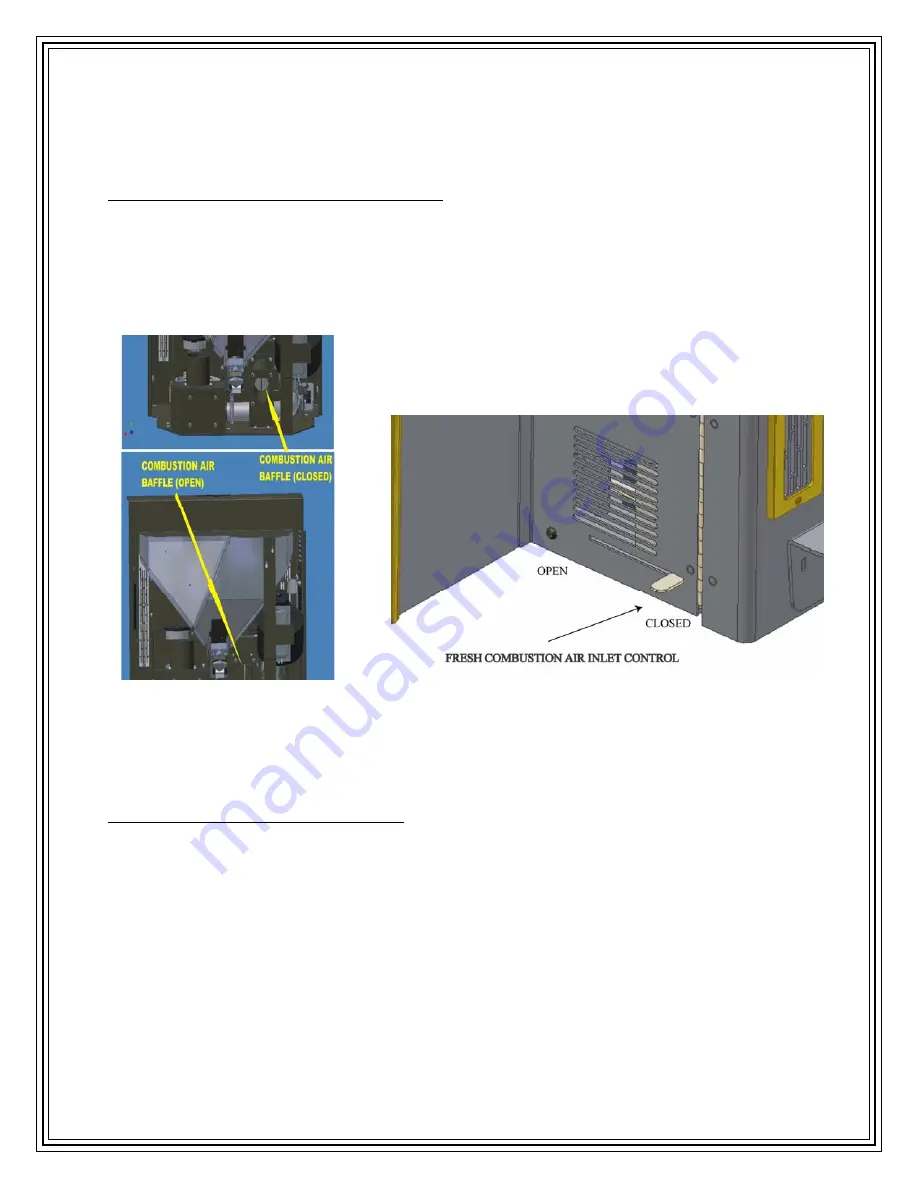
move to that heat setting anytime the thermostat calls for heat. Otherwise, when the thermostat no
longer calls for heat, the control board sets the stove to Heat #1.
•
If the operator changes the heat level to 1 while the thermostat is calling for heat, it will become the
new Thermostat Heat Level. But because this is the same setting as when the thermostat stops calling
for heat, the operator will get no indication that the thermostat is in control of the stove.
CHANGE HEAT LEVEL (thermostat inactive)
•
If the operator makes a change to the heat level while the stove is inactive, the stove will move to that
level. The next time the thermostat calls for heat, the most recently programmed heat level will
become the Thermostat Heat Level and the stove will operate at that point until the thermostat no
longer calls for heat.
FIGURE 10: CROSSFIRE COMBUSTION FRESH AIR CONTROL
COMBUSTION FRESH AIR CONTROL
Combustion fresh air can be controlled on the Crossfire. This optional control assists in optimizing the burn
rate of the fuel. All air entering the firebox is controlled with this fresh air control system. A control lever as
shown in figure #10 above, open and closes the inlet air damper. This air control should allow the homeowner
the ability to adjust for any variation in fuel to ensure an efficient burn. By opening or closing this baffle the
amount of fresh air allowed into the combustion chamber can be controlled. If the fresh air is connected to a
pipe leading outside the house, the fresh air control should be kept in the closed condition to minimize air
infiltration into the home when the Crossfire
stove is not in use.
Version
2.0fc
27
















































